Perhaps these days most commonly associated with the garden, there’s more to the humble wheelbarrow than you might think. Sophie Paterson explores its potential, past and present, as a low-impact form of transportation.
The traditional European wheelbarrow pictured above has been the faithful friend of gardeners, farmers, builders, miners, market sellers and more for many centuries. With a traditional wooden body supported most typically by a single wheel at its front, it can be easily operated by an individual using the two handles at its rear. Historical sources suggest that the wheelbarrow was commonplace across England and the Netherlands by the 13th century. In France, meanwhile, une brouette was depicted in a stained glass window of Chartres Cathedral, dated to approximately 1220.
Unfortunately for the purportedly thousands of conscripted labourers who toiled and died constructing St Petersburg at the beginning of the 18th century, its use does not seem to become mainstream in Russia until some time later. Without the aid of wheelbarrows, the vast amounts of soil excavated in order to build its canal system were often dug by hand and carried in baskets or in the front of the workers’ long tunics. So it was that the so-called ‘Venice of the North’ came also to be known as the ‘city built on bones‘.

An illustration of the early European wheelbarrow in use via Wikimedia Commons.
Questions of geographical proliferation aside, however, with the exception of replacing wood with metal or even plastic, little appears to have changed in the function or design of the European wheelbarrow since its earliest days. In the absence of a pack animal or motorised alternative, it remains the go-to tool for transporting over relatively short distances loads too heavy to comfortably carry: be it compost, vegetables, stone or even children, if the illustration of medieval wheelbarrows above is anything to go by.
And yet, is this where the history of wheelbarrows truly began?
The Chinese wheelbarrow
In fact, the wheelbarrow has origins far older and, indeed, a design superior for medium to long-haul use, when one looks to China. Here its use goes back at least as early as 200 AD. It pre-dates its European equivalent by a thousand years, although still lags behind its cousins, the two-wheeled cart and four-wheeled wagon, which were used across the ancient world for at least two millennia prior even to this. Kris De Decker of Low Tech Magazine explains the differences in use between the European and Chinese wheelbarrows as follows:
When the wheelbarrow finally caught on in Europe, it was used for short distance cargo transport only, notably in construction, mining and agriculture. It was not a road vehicle. In the East, however, the wheelbarrow was also applied to medium and long distance travel, carrying both cargo and passengers. This use – which had no Western counterpart – was only possible because of a difference in the design of the Chinese vehicle. The Western wheelbarrow was very ill-adapted to carry heavy weights over longer distances, whereas the Chinese design excelled at it.
On the European wheelbarrow the wheel was (and is) invariably placed at the furthest forward end of the barrow, so that the weight of the burden is equally distributed between the wheel and the man pushing it. In fact, the wheel substitutes for the front man [of the usual two required] of a handbarrow or stretcher, the carrying tool that was replaced by the wheelbarrow. In the characteristic Chinese design a much larger wheel was (and is) placed in the middle of the wheelbarrow, so that it takes the full weight of the burden with the human operator only guiding the vehicle. In fact, in this design the wheel substitutes for a pack animal. In other words, when the load is 100 kg, the operator of a European wheelbarrow carries a load of 50 kg while the operator of a Chinese wheelbarrow carries nothing. He (or she) only has to push or pull, and steer.
Referred to in texts as Mu Nu Liu Ma – ‘a device powerful as a horse, fast as a cow’ – by the 300 AD it was by far the favoured method of transportation for the military, with a soldier able to move 200-250 kg at least 10km a day over undulating terrain. The improvements in design did not end there, however. Later designs harnessed not only a minimal amount of human energy but also that of the wind through the addition of sails.

Image taken from The Costume of China, illustrated in forty-eight coloured engravings and published in London in 1805. Sourced via Wikimedia Commons.
In the drawing above by William Alexander, draughtsman of the 1793 Macartney Embassy which was Britain’s first diplomatic mission to China, we can see a Chinese porter pushing a sail-assisted wheelbarrow. He writes:
When the wind is not favourable, the sail is set aside, and another labourer is employed to assist the porter by pulling the cart with the help of a rope placed across his shoulders. There are some vegetables, a basket of fruit, a box of tea, loose bamboos, and a jar of wine, the stopper of which is covered with clay, on the cart; on the side are placed porter’s hat, and some tools for keeping the wheelbarrow in order.
Alexander was by no means the only Westerner to express admiration for these ‘fleets’ of wind-powered barrows, as evidenced by the words of André Everard Van Braam Houckgeest, a member of the Dutch East India Company, writing an account of his travels in China in four years later.
“One had to grant the apparatus was not a freak, but an arrangement by which, with a favourable wind, the wheelbarrow porters could be greatly assisted. Otherwise such a complicated thing would have been only a bizarre curiosity. I could not help admiring the combination, and was filled with sincere pleasure in seeing twenty or so of these sailing-wheelbarrows setting their course one behind the other.”
Meanwhile, sources from 1176 reveal that wheelbarrows were used not only to move supplies by the military but also as a form of defence in and of themselves. Forming protective lines able to obstruct cavalry, they had the added advantage of being easily movable, able to advance or withdraw with relative speed.
It seems, then, that the Chinese have certainly been far more inventive in their use of the seemingly humble wheelbarrow than in Europe and I can recommend Kris De Decker’s excellent article How to Downsize a Transport Network for a fuller history. But now to consider how wheelbarrows have fared in more recent times.
Modern adaptations
Whilst the rise of motor vehicles heralded a decline in the traditional Chinese wheelbarrow for medium and long-haul transportation, it continues to inspire travellers and inventors alike. In 1974, Anglican clergyman Geoffrey Howard garnered international media attention when he trekked 1,946 miles from Beni Abbes in Algeria all the way to Kano in Nigeria over the course of three months, carrying food and water supplies on a specially adapted wheelbarrow which borrowed much of the Chinese sail-assisted design. He recounted his experience in the book Wheelbarrow across The Sahara.
Where short-haul use is concerned, that same year also saw James Dyson’s Ballbarrow crowned winner of a Building Design Innovation Award. Bold and overwhelmingly, well, orange in appearance, this injection-moulded plastic wheelbarrow featured a spherical ball on the front end instead of a wheel, the logic being that the larger surface area of the ball makes it easier to use on softer ground and offers improved lateral stability on uneven ground when pushing heavy loads.
Of course, today there exist myriad options in terms of materials, manufacture, shape and size, according to a barrow’s purpose. A heavy-duty builder’s wheelbarrow will likely be steel and feature a bumper-bar and pneumatic tyre, in contrast to the average domestic gardener’s wheelbarrow constructed from lightweight aluminium. Canvas wheelbarrows, meanwhile, can fold up for efficient storage, apparently a big hit with festival-goers for easy transportation of camping gear.
Meanwhile, the supremely practical Honey Badger Wheel was inspired directly from a Low Tech Magazine article about the Chinese wheelbarrow and crowd-funded via a Kickstarter campaign. It offers an all-terrain solution seeking to appeal to hunters and parents alike from their LEED Bicycle Solutions base in Utah. Not only can it carry your freshly caught game but an add-on or two later and – voilà! – you can seat up to three small children. Time to ditch the pram?
All in all it seems fair to say that, however we might use them, the wheelbarrow is here to stay, and nowhere more so than if you happen to live in the Hungarian village of Hosszúhetény, home to the annual international sporting event that is Talicskaolimpia – the Wheelbarrolympics! On that note, I leave you with this video from their 2016 games.
 About the author
About the author
Sophie Paterson works as part of the Lowimpact.org team with a focus on social media and book promotion. She spent the past year living and volunteering on a farm in Devon. In any spare time she undertakes natural building work and training and attempts to keep up her Arabic language skills.

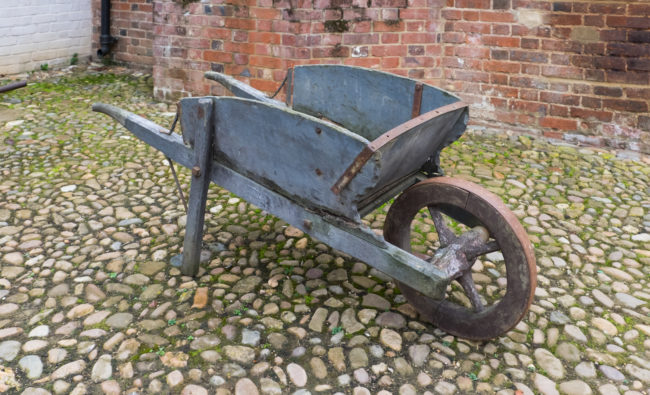



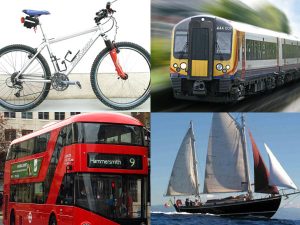







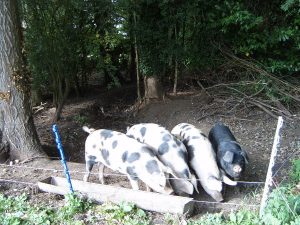

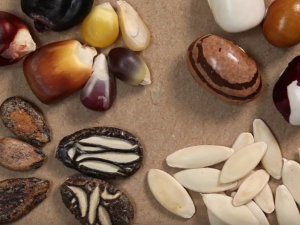




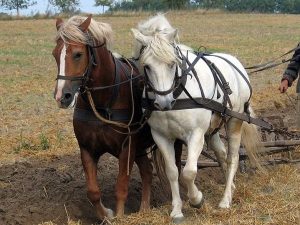


5 Comments
Truly the transport of the future and of the past! Especially the Chinese Version (and it’s offshoot – the Honey Badger Wheel), carries a good load at a sensible speed – walking speed which can go on for a long time for no appreciable effort, uses NO outside fuels such as petrochemicals, low tech so can be reapired if need be by anyone good with their hands. The low speed means little or no risk to other “road users” (in fact it doesn’t need a road even). You could go on and on about how good this is, I really do like it!
Conventional European wheelbarrow needs much bigger wheel, wider tyre, more wheels, longer handles, extra container in front of wheel, etc. But it shows promise.
Tim, why not just go for a Chinese style, it has most of that already! Another thought, considering the increased price and scacity of petrocarbob fuels and the approaching electronic era (actually it’s here) thus reducing job prospects for many this would be a cheap and sustainable method for “about town” deliveries – sort of “super posties”
I was hoping someone (in China?) would take the hint and start mass producing them, in something light, in a fashion that will go out of style quickly. Then, ten years from now, I’ll be able to buy one second hand. Because there’s lots of firewood a few fields away waiting to be collected up….
The “monowalker”, or a backpack-wheelbarrow hybrid, formerly known as “The Mule”, or “M.U.L.E. Multipurpose Uniaxial Litter Enginery” is also something very useful. It is a wheelbarrow carried behind one’s back, which, with curved handles, can be carried on one’s shoulders, with the wheel holding most of the weight, and the shoulders being used for carrying some of the weight, as well as guiding and balancing the wheelbarrow-backpack hybrid. The MonoWalker is the next step after the “classic wheelbarrow” and the “chinese wheelbarrow” (which is a taller wheelbarrow with a larger wheel and the weight closer to the center of the wheel, ideally below the center of the wheel for better stability during travel).